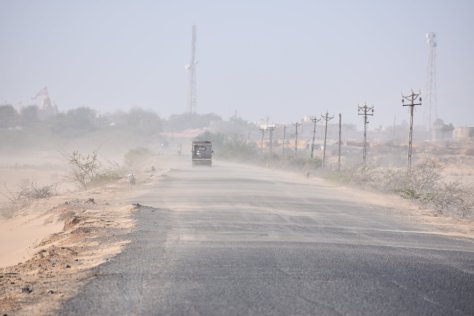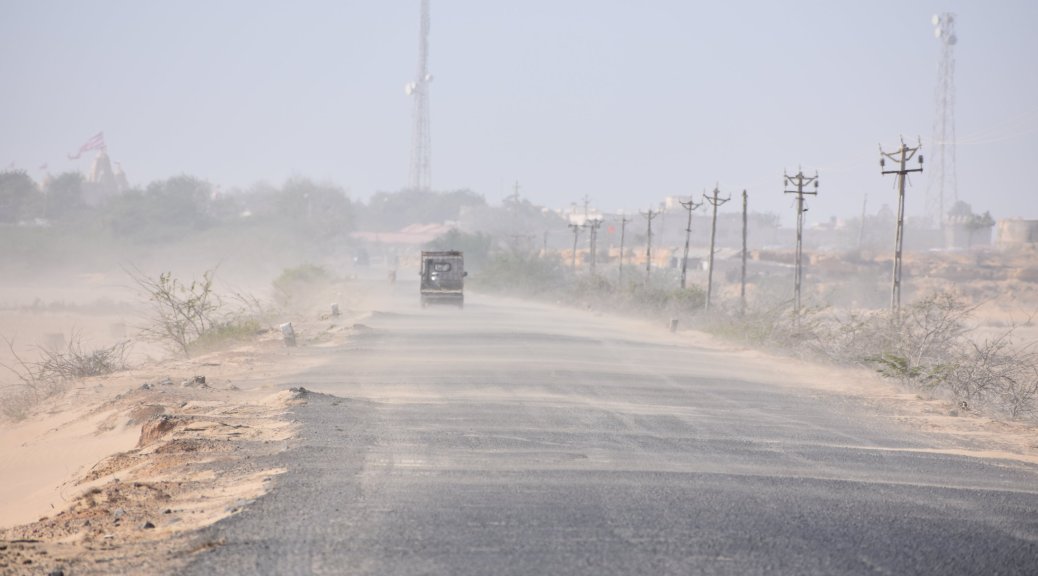With winter, comes in the dry cold winds over the great Indian Thar desert region. The great Rann of Kutch is a part of the Thar desert and is shared between India and Pakistan. The cold winds carry the surface water along with it and dry up the salt marsh. Thus, the entire marshland looks like this phenomenal never-ending stretch of white salt flatland. Rann of Kutch is one of the largest salt marshes in the world and the amazing sunsets over the white salt flats has made it to the bucket list of every traveler and rider.
With all my backpacking experience in other places of India, I wanted to explore ROK too… But when I landed there with a rough idea about the places to visit, I was in for a surprise. Backpacking in Kutch was not as easy as it seemed to me. Firstly, the connectivity through public transportation wasn’t reliable and accommodation options were very few and expensive. It is close to a year since I did this trip and I think I should post this before the ROK travel season starts for this year.
So to begin with, let me tell you the transportation options for getting around Kutch.
1. Pre-book a taxi for your entire trip if you are flying down to Bhuj (The option which I chose).
2. Get a self-drive car or bike from Ahmedabad if that is where you are starting your trip from.
3. There are government buses connecting each place. However, as on date there is only one bus plying each day with long to very long traveling time.
For the stay, I would recommend making Bhuj your central location as it is easy to travel to each place if you choose to follow my itinerary and the stay would be relatively cheaper. The Tent city is extremely expensive and overly commercialized. If you want to experience the tent stay in the salt flats like the way it is portrayed everywhere on the internet, I would advise you to spend your last night at Dholavira.
The roads in Kutch I must tell you are something that will amaze you with. They rip right into the horizon, they are super straight, and one would want to just stop by every other time and get the photos of the road with their car/ bike parked by the side.

Then comes the itinerary. This is what a typical itinerary for anyone traveling to Kutch looks like if the start and end point of your trip is Bhuj.
Day 1: Koteshwar + Lakhpat + Mata no Madh
- You will be traveling to the western-most tip of Indian Sub-continent, Koteshwar. The Koteshwar Mahadev temple is of religious importance. Right after it is located the Narayan Sarovar which is popular for spotting Flamingoes if you are going there in the right season. You can have free lunch at the Narayan ashram located nearby.
- You can then drive to Lakhpat. You will be welcomed by the large walls of an erstwhile fortress as you enter this town which is now a religiously important place for the Sikh community which maintains the Gurudwara Sahib that houses some of the relics of Sri.Guru Nanak.
- Lakhpat, once used to be a buzzing port town and the economic center of the state until it was hit by a major famine. The entire town was abandoned for what it is today popularly known to be a haunted village. Anyway, it is guarded by the navy and the coast guards and with their permission, I enjoyed my walk there with some nice photos of the abandoned village, its houses and temples.
- The deity at the Ashapura Devi temple located at Mata no Madh is believed to be a powerful goddess and hence visited by everyone traveling here. There really wasn’t much for me to do there and I preferred my 2kms drive up to the hill temple over this. We had reached there at sunset time and I decided to spend the remaining time watching the golden skies from there before heading back to Bhuj for the night.

Day 2: Dhordo + Kala Dhungar + Hodka + Dhorbana + Banni
- Dhordo: For me, the photos of this exact place was what brought me here even before I knew what Rann of Kutch was. Popularly known as the tent city, it is a commercialized patch developed by the Gujarat government to promote tourism. You can spend some time enjoying the various folk dances, camel rides etc. along with various stalls put-up there.
- Drive up to Kala Dungar. This is the highest point in the entire Kutch region and the view of 360deg salt flat is something you will not forget. There is a small temple on the top associated with a folklore.
- Hodka, Dhrobana, Bhirandiyara, Ludiya, Kavda and Banni are some of the several villages along the edge of the Great Rann of Kutch where there are settlements of specific artisans and you can interact with these communities. Although the famous Kutchi embroidery is a generalized term, the patterns used in their stitching, their apparel and jewellery are unique to each community and thus is a representation of individual village. Each of their Bhungas (as the huts are called in Kutch) are uniquely painted and walking in these villages are experiences in themselves. This day trip is highly promoted by the Gujarat government as part of rural tourism.

Day 3: Mandvi and Vijay Vilas palace
- You can take the route via Nalia to reach Mandvi. This route offers amazing views and a stretch with windmills might even blow your mind 😛
- Stop by at the Vijay Vilas palace
- Spend some time chilling by the Mandvi beach
Day 4: Bhuj Local sightseeing (Every place has an entry fee and specific open days and timings)
- Aina Mahal and Parag Mahal are both old palaces of the erstwhile royalty located within the same premises. A visit here is worth your time because it offers a lot of insights into history and photo spots to the shutterbugs.
- The biggest Swaminarayan temple in India is located in Bhuj. For those of you who don’t know, it is the same organization that manages the Akshardham temple in Delhi.
- This is a dedicated day for shopping all your Kutchi embroidered souvenirs. You can buy all the handicrafts directly from the artisans and get good deals either at Bhujodi handloom village or Bhuj Haat.
- Take a walk around the Bhuj Haat premises. A replica of the Parliament building is made here and houses stories from the lives of several leaders who lead India to freedom.
- A small hike up the Bhujio Dungar fort offers you a panoramic view of the entire Bhuj town, an early morning or evening visit is advised to avoid the harsh sun.
- Befriend a local and there are some offbeat spots in the town that you would not find on the internet. The Kutchi museum, the Khari Nadi canyon, Paddhargadh ruins, Chattardi ruins, Tapkeshwari caves, Ramakund caves are among a few of those unexplored gems.

Day 5: Dholavira
For me, this was the highlight of my trip. (Click here to read the detailed itinerary and my story in a separate post). An archaeological site from the Indus Valley civilization era, a fossil park from the dinosaur era, tribal settlements and the enormous stretch of salt flats- You need to time your stay here on a full moon night to get the best experience of the great Rann of Kutch.
Day 6: Head back to Bhuj for your return flight or proceed towards your next destination.
I assume this article was of some use if you were planning your trip to the Rann. Was it helpful? Is there something that I missed out? Tell me in the comments below…


One thought on “A detailed guide to the Rann of Kutch”